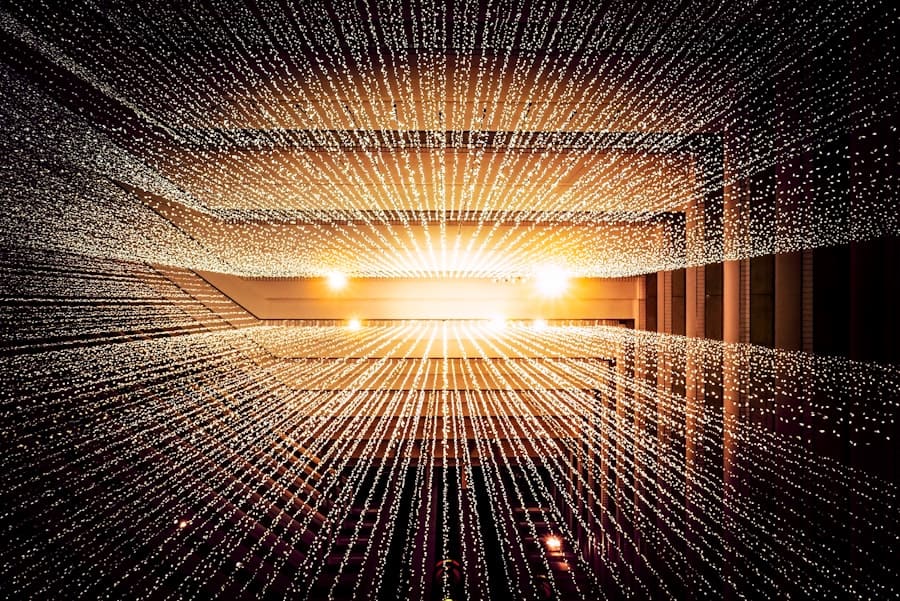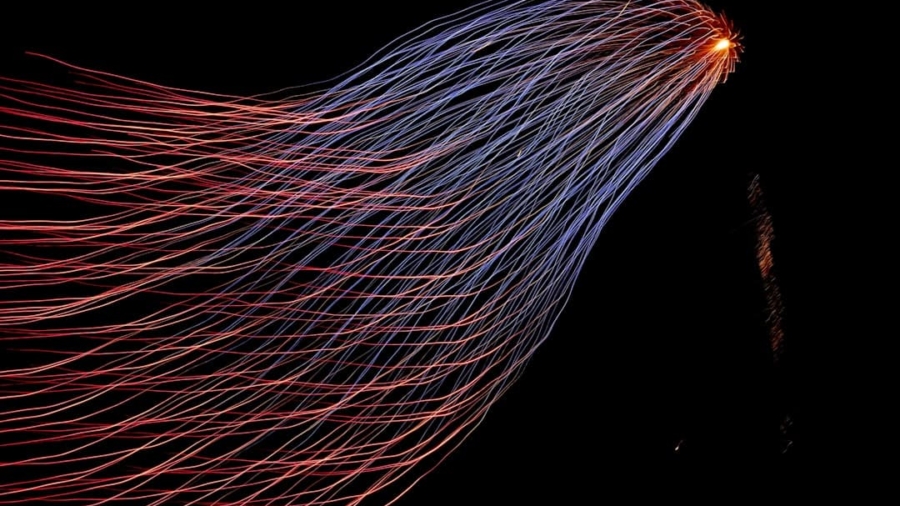Space telescopes have revolutionized our understanding of the universe, providing unprecedented views of celestial phenomena that were once beyond our reach. Instruments like the Hubble Space Telescope, the Kepler Space Telescope, and the more recent James Webb Space Telescope have captured images and data that have reshaped our knowledge of galaxies, stars, and exoplanets. These telescopes operate outside the Earth’s atmosphere, allowing them to avoid atmospheric distortion and light pollution, which can obscure astronomical observations.
The data they collect is not merely a series of images; it encompasses a vast array of information, including spectral data, light curves, and other measurements that require sophisticated analysis. The sheer volume of data generated by these space telescopes is staggering. For instance, the Hubble Space Telescope has produced over 1.5 million observations since its launch in 1990, resulting in more than 150 terabytes of data.
The James Webb Space Telescope, designed to observe the universe in infrared wavelengths, is expected to generate even larger datasets as it explores the early universe, star formation, and the atmospheres of distant exoplanets. This massive influx of data presents both opportunities and challenges for astronomers and scientists who seek to extract meaningful insights from it. As the complexity and volume of data continue to grow, traditional methods of analysis are becoming increasingly inadequate, necessitating the integration of advanced technologies such as artificial intelligence (AI).
Key Takeaways
- Space telescopes generate massive amounts of data that require advanced analysis techniques.
- AI is essential for processing and managing the huge volumes of data collected by space telescopes.
- AI helps in identifying patterns and anomalies in space telescope data, enabling new discoveries.
- AI enhances image processing and data visualization, providing clearer insights into the universe.
- Despite its benefits, AI also faces challenges and limitations in analyzing massive data sets from space telescopes.
The Need for AI in Analyzing Massive Data Sets from Space Telescopes
Challenges in Data Analysis
Moreover, the complexity of the data often requires specialized knowledge in various fields such as astrophysics, mathematics, and computer science, making it challenging for individual researchers to keep pace with the influx of new information.
The Role of AI in Data Analysis
AI offers a solution to these challenges by automating and enhancing the data analysis process. Machine learning algorithms can be trained to recognize patterns and make predictions based on large datasets, significantly reducing the time required for analysis. For example, AI can sift through thousands of images captured by space telescopes to identify celestial objects or phenomena that warrant further investigation.
Accelerating Discovery with AI
This capability not only accelerates the pace of discovery but also allows researchers to focus their efforts on more complex questions that require human intuition and creativity. As a result, AI is becoming an indispensable tool in the field of astronomy, enabling scientists to unlock new insights from the vast troves of data generated by space telescopes.
How AI Assists in Processing and Managing Massive Data Sets

The processing and management of massive datasets from space telescopes involve several stages, including data acquisition, storage, preprocessing, analysis, and interpretation. AI plays a crucial role at each of these stages, streamlining workflows and enhancing efficiency. For instance, during data acquisition, AI algorithms can be employed to filter out noise and irrelevant information in real-time, ensuring that only high-quality data is stored for further analysis.
This preprocessing step is vital because it reduces the amount of data that needs to be analyzed later, allowing researchers to focus on the most promising observations. Once the data is collected and preprocessed, AI can assist in organizing and managing it effectively. Advanced machine learning techniques can categorize data based on various parameters such as object type, brightness, or spectral characteristics.
This categorization facilitates easier access to specific datasets for researchers who may be interested in particular phenomena or types of celestial objects. Furthermore, AI-driven databases can provide intuitive search functionalities that allow astronomers to query vast datasets using natural language processing (NLP) techniques. This capability transforms how researchers interact with astronomical data, making it more accessible and user-friendly.
The Role of AI in Identifying Patterns and Anomalies in Space Telescope Data
One of the most significant contributions of AI in analyzing space telescope data lies in its ability to identify patterns and anomalies that may not be immediately apparent to human observers. Machine learning algorithms excel at recognizing subtle trends within large datasets, enabling them to detect celestial events or objects that deviate from expected behavior. For example, AI has been instrumental in identifying transient astronomical events such as supernovae or gamma-ray bursts by analyzing light curves—graphs that depict how the brightness of an object changes over time.
Moreover, AI can assist in anomaly detection by flagging unusual patterns that warrant further investigation. This capability is particularly valuable in the search for exoplanets, where researchers analyze light curves from stars to identify periodic dips in brightness caused by orbiting planets. Traditional methods may struggle to differentiate between genuine signals and noise; however, machine learning algorithms can be trained on known exoplanetary systems to improve their accuracy in identifying potential candidates.
By automating this process, AI not only accelerates the discovery of new exoplanets but also enhances our understanding of their characteristics and potential habitability.
AI’s Contribution to Enhancing Image Processing and Data Visualization
The images captured by space telescopes are often breathtakingly beautiful but also complex and rich in information. AI plays a pivotal role in enhancing image processing techniques that allow astronomers to extract meaningful insights from these images. For instance, deep learning algorithms can be employed to improve image resolution through super-resolution techniques, enabling researchers to visualize fine details that may have been lost due to noise or atmospheric interference during observation.
In addition to improving image quality, AI also contributes significantly to data visualization efforts. Advanced visualization tools powered by AI can transform raw data into interactive visual representations that facilitate exploration and interpretation. These tools allow astronomers to manipulate datasets dynamically, zooming in on specific regions of interest or adjusting parameters to observe different aspects of celestial phenomena.
Such capabilities enhance collaboration among researchers by providing intuitive platforms for sharing findings and insights derived from complex datasets.
Challenges and Limitations of AI in Analyzing Massive Data Sets from Space Telescopes

Despite its many advantages, the integration of AI into the analysis of massive datasets from space telescopes is not without challenges and limitations. One significant concern is the potential for bias in machine learning algorithms. If training datasets are not representative or contain inherent biases, the resulting models may produce skewed results that could mislead researchers.
This issue underscores the importance of curating diverse and comprehensive training datasets that accurately reflect the complexities of astronomical phenomena. Another challenge lies in the interpretability of AI models. While machine learning algorithms can identify patterns with remarkable accuracy, understanding the underlying reasons for their predictions can be difficult.
This lack of transparency poses challenges for scientists who need to validate findings or explain results to broader audiences. Efforts are underway to develop explainable AI techniques that enhance model interpretability while maintaining performance levels. Addressing these challenges is crucial for ensuring that AI remains a reliable tool for advancing our understanding of the universe.
Future Prospects and Developments in AI for Space Telescope Data Analysis
The future prospects for AI in analyzing space telescope data are promising and hold great potential for advancing our understanding of the cosmos. As technology continues to evolve, we can expect more sophisticated machine learning algorithms capable of handling increasingly complex datasets with greater accuracy and efficiency. The development of quantum computing may further enhance these capabilities by enabling faster processing speeds and more advanced modeling techniques.
Moreover, collaborative efforts between astronomers and computer scientists are likely to yield innovative solutions tailored specifically for astronomical applications. Initiatives such as citizen science projects could harness public engagement with AI tools to analyze vast datasets collaboratively. By democratizing access to astronomical data analysis through user-friendly interfaces powered by AI, we can tap into a broader pool of talent and creativity that may lead to unexpected discoveries.
The Impact of AI on Advancing our Understanding of the Universe through Space Telescope Data
The integration of artificial intelligence into the analysis of massive datasets from space telescopes represents a transformative shift in how we explore and understand the universe. By automating complex processes, identifying patterns within vast amounts of data, enhancing image processing capabilities, and facilitating intuitive visualization tools, AI is reshaping the landscape of astronomical research. As we continue to push the boundaries of exploration with advanced space telescopes like James Webb and future missions on the horizon, AI will undoubtedly play an increasingly vital role in unlocking new insights about our universe.
The collaboration between human expertise and artificial intelligence holds immense promise for accelerating discoveries across various fields within astronomy.
In a related article, NeuronWriter SEO NLP Optimization is discussed as a tool to boost content creation and analysis. This technology could potentially enhance the efficiency of AI systems used in analyzing massive data sets from space telescopes. By utilizing advanced natural language processing and optimization techniques, researchers can extract valuable insights from the vast amount of data collected by these telescopes. To learn more about NeuronWriter SEO NLP Optimization, check out



Add a Comment